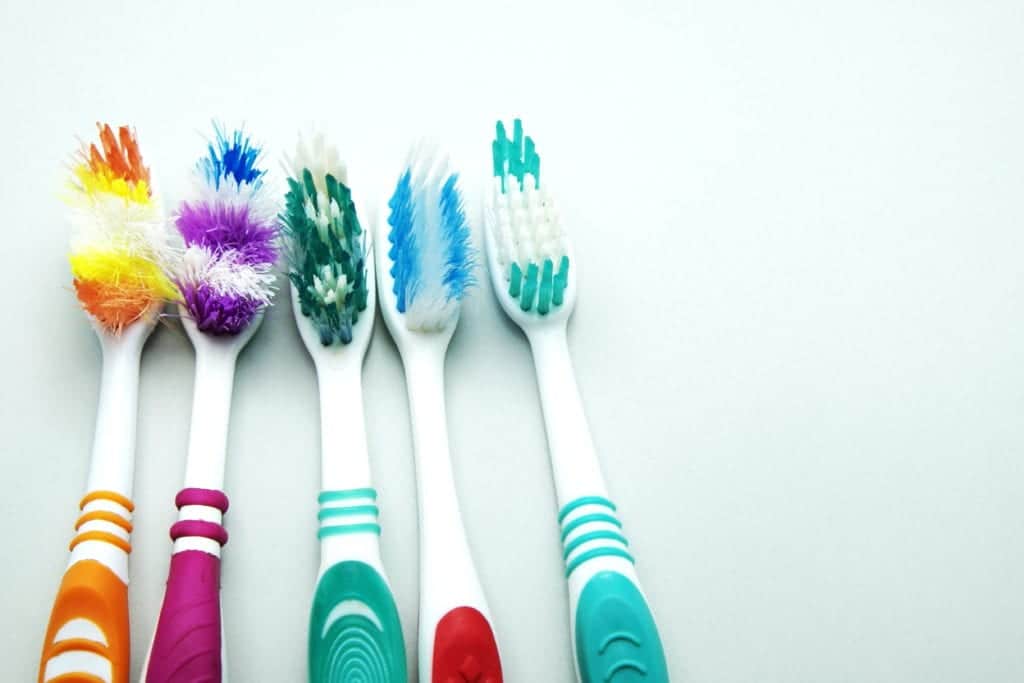
How often do we get rid of or replace clothes that are full of holes and wear, or food that’s expired or beauty products? Why don’t we replace our toothbrush enough? Dental hygiene doesn’t get enough attention as other areas in our health and beauty regimens as it should. However, there are important rules and tips you should follow for maintaining optimal dental health.
When should I change my toothbrush?
The American Dental Association (ADA) and we at The Good Dentist recommend you change your toothbrush every 3 months. Toothbrushes go through normal wear and tear over time and become less effective with removing plaque from teeth and gums. Studies have found that around the 3 month mark is when the bristles break down and are less effective.
Other considerations to think about (or probably don’t want to think about) is that germs can hide and build up in toothbrush bristles. This makes it important to replace your toothbrush after you’ve had a cold, or other illnesses to avoid risk of possible reinfection.
Iif not taken care of properly, fungus and bacteria can also develop in the bristles. Make sure you rinse off and allow to dry by storing uncovered in an upright position and keeping it away from other used toothbrushes when you’re finished brushing. When you travel, be sure to cover your toothbrush head to protect it and reduce the spread of germs.
If you are unsure of how long it’s been, pay attention to the condition your toothbrush head is in. Are the bristles worn out, fanned out, or frayed, or do you see dark color changes, which could sign of mold? Then it’s time to replace your toothbrush.
What If I Don’t Change My Toothbrush Often Enough?
We know that bacteria and fungus can linger and accumulate on your toothbrush so if that doesn’t get you nervous about changing your toothbrush then some other risks should be motivating enough. One risk includes damaging your gums, as toothbrushes become old, they become ineffective with removing plaque from your teeth, which leads to gingivitis. If left untreated, gingivitis leads to infection, which can cause teeth to fall out.
Another risk is you getting sick from overused toothbrushes (see: bacteria and fungus build up). Your toothbrush can grow mold, or possibly the least appealing, you can ingest unwanted particles if stored near a toilet.
I don’t know about you, but I’m going to go change my toothbrush right now and schedule a deep cleaning with my dentist at The Good Dentist.
What Dental Products Should I Buy?
At your next dental checkup and cleaning, we can discuss what you should buy based on your individual needs, your particular dental health state, etc.
Some common suggestions among dental professionals are to look for toothbrushes with soft bristles, as hard bristles damage your teeth and gums, choose a toothbrush head size that touches one or two teeth at a time, use a toothpaste containing fluoride approved by the ADA, consider using mouthwash to further fight plaque and gingivitis, and don’t forget floss!
Consider investing in an electric toothbrush, as these have been proven to improve oral health beyond what a manual toothbrush can do by removing plaque, reducing gingivitis and eliminating teeth staining. They’ve also been shown to minimize the amount of plaque on the teeth of people with periodontal disease.
Do your research on what products fit your needs best, and don’t forget to ask your dentist for recommendations.
Need a dentist? We’d love to see you. Request an appointment at The Good Dentist today!

